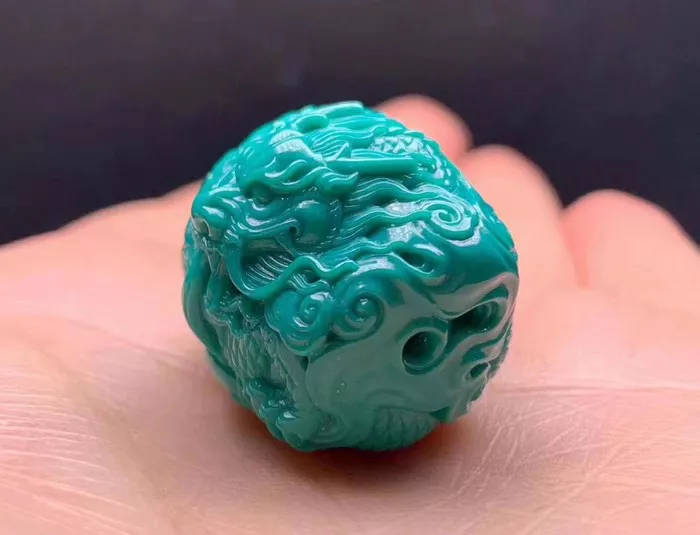Turquoise is a captivating gemstone prized for its stunning blue-green color and unique veining patterns. However, with the increasing prevalence of synthetic and imitation turquoise in the market, it’s essential to know how to distinguish between genuine and fake turquoise. By learning how to conduct various tests and identify key characteristics, you can determine whether the turquoise you have is real or not.
Introduction to Turquoise
Turquoise has been cherished for thousands of years for its vibrant color and cultural significance. Historically, turquoise has been used for adornment, jewelry, and ceremonial purposes by cultures around the world, including ancient Egyptians, Native Americans, and Persians. Its striking blue-green hue and distinctive veining patterns make turquoise a highly sought-after gemstone in the jewelry industry.
Turquoise is a hydrous phosphate mineral composed of copper and aluminum, with traces of iron, zinc, and other elements contributing to its color and composition. Its color can vary from light sky blue to deep greenish-blue, depending on factors such as the presence of copper and iron impurities, as well as the stone’s porosity and matrix.
Understanding the Characteristics of Turquoise
Before delving into the methods for testing turquoise’s authenticity, it’s essential to understand the key characteristics of genuine turquoise:
Color: Genuine turquoise typically exhibits a range of blue and green hues, often with subtle variations in tone and intensity. The most prized turquoise stones have a vibrant, saturated color with minimal matrix or veining.
Matrix: Turquoise is commonly found with matrix—a web-like pattern of veins or inclusions that intersect the stone’s surface. The matrix can vary in color and density, ranging from black or brown to lighter shades of gray or tan. While matrix is a natural characteristic of turquoise, excessive matrix or unnatural patterns may indicate that the turquoise is fake or treated.
Texture: Genuine turquoise has a smooth, waxy texture when polished, with no rough or grainy areas. The surface of the stone should feel cool to the touch and exhibit a slight sheen or luster. Avoid turquoise that feels excessively soft or powdery, as this may indicate that the stone has been dyed or treated.
Hardness: Turquoise has a moderate hardness of 5 to 6 on the Mohs scale, making it relatively durable but susceptible to scratching and abrasion. Genuine turquoise should not easily scratch or chip when subjected to normal wear and tear.
Specific Gravity: The specific gravity of turquoise is typically between 2.60 and 2.85, depending on factors such as porosity and composition. This property can be useful for distinguishing between genuine turquoise and imitations, as synthetic or treated turquoise may have a different specific gravity.
How to Test if Turquoise is Real
Now that we’ve covered the characteristics of genuine turquoise, let’s explore several methods for testing its authenticity:
Visual Inspection: The first step in determining whether turquoise is real is to visually inspect the stone for any telltale signs of authenticity. Look for a range of blue and green hues, natural matrix patterns, and a smooth, waxy texture. Genuine turquoise should exhibit a consistent color and texture throughout the stone, with no obvious signs of dyeing or treatment.
Use of a Loupe or Magnifying Glass: A loupe or magnifying glass can help you examine the surface of the turquoise more closely for any signs of artificial coloring or treatment. Look for uniform coloration, unnatural matrix patterns, or surface coatings that may indicate that the turquoise is fake. Genuine turquoise will have a natural, untreated appearance under magnification.
Scratch Test: While turquoise is relatively durable, it can still be scratched by harder materials. You can perform a scratch test using a sharp object such as a knife or nail to see if the turquoise leaves a mark. Genuine turquoise should not easily scratch or chip, although minor surface abrasions may occur over time with wear.
Hot Needle Test: The hot needle test is a simple and effective method for determining whether turquoise is real or not. Heat a sewing needle or pin until it is red-hot, then carefully touch the needle to an inconspicuous area of the turquoise. Genuine turquoise will emit a faint, sweet odor resembling burning hair, while fake turquoise may produce a chemical or plastic smell.
Specific Gravity Test: As mentioned earlier, the specific gravity of turquoise can be measured to determine its authenticity. To perform a specific gravity test, weigh the turquoise in air and then weigh it again while submerged in water. Calculate the difference in weight and divide by the weight of the stone in air to determine its specific gravity. Genuine turquoise should have a specific gravity within the expected range of 2.60 to 2.85.
Professional Certification: If you’re still unsure about the authenticity of turquoise, consider seeking professional certification from a reputable gemological laboratory. Gemologists can conduct a series of tests, including spectroscopy and chemical analysis, to determine the composition and origin of the turquoise accurately.
Conclusion
In conclusion, testing turquoise for authenticity requires a combination of visual inspection, physical tests, and knowledge of the gemstone’s key characteristics. By familiarizing yourself with the properties of genuine turquoise and conducting various tests, you can determine whether the turquoise you have is real or not. Whether you’re purchasing turquoise for jewelry-making or collecting purposes, being able to distinguish between genuine and fake turquoise is essential for making informed decisions in the gemstone market.


